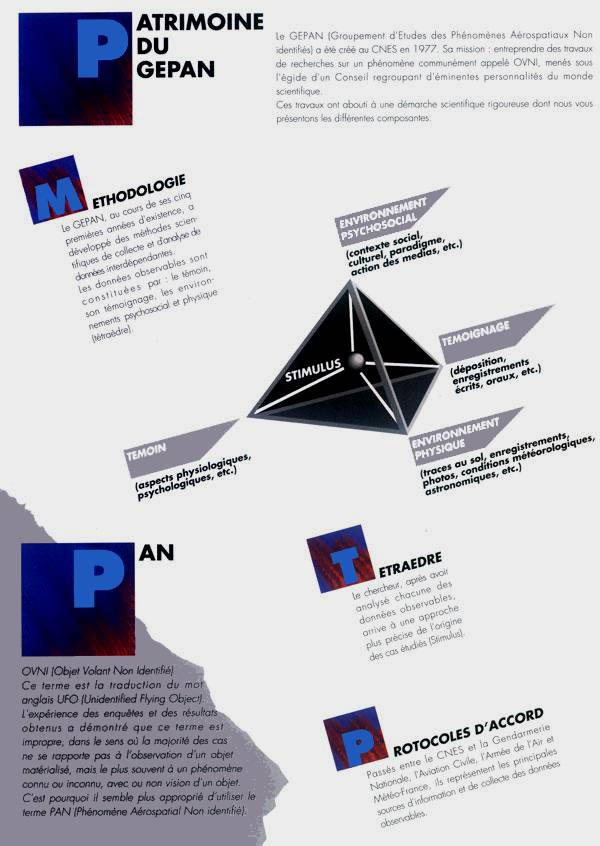This document was already reproduced on the web.

|
GEPAN (Group of Study of the Non-identified Aerospace Phenomena) was created within CNES in 1977. Its mission: to undertake research tasks on a phenomenon commonly called UFO, carried out under the aegis of the Council gathering prominent personalities of the scientific world.
This work led to a rigorous scientific approach of which we present the various components to you.
Methodology
GEPAN, during its the first five years of existence, developed scientific methods of collect and analysis of interdependent data.
The observable data are made of: the witness, his testimony, psycho-social environment and physics (tetrahedron).
TETRAEDRE
Le chercheur, après avoir analysé chacune des données observables, arrive à une approche plus précis de l'origine des cas étudiés (Stimulus).
PROTOCOLES D'ACCORD
Passés entre le CNES et la Gendarmerie Nationale, l'Aviation Civile, l'Armée de l'Air et Météo-France, ils représentent les principales sources d'information et de collecte des données observables.
PAN
OVNI (Objet Volant Non Identifié)
This term is the translation of English word UFO (Unidentified Flying Object). The experience of the investigations and the obtained results showed that this term is unsuitable, in the sense that the majority of the cases do not refer to the observation of a material object, but generally to a known or unknown phenomenon, with or without the vision of an object. This is why it seems more suitable to use the term PAN Phénomène (Aérospatial Non Identifié) [Unidentified Aerospace Phenomenon, UAP].